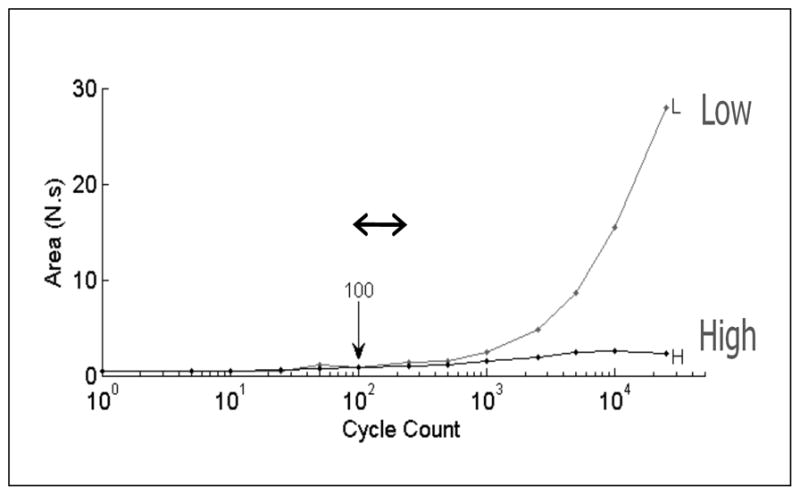Figure 3.

The counted cycles method to determine the time to achieve block. Specific numbers of KHFAC cycles (from 1 to 50,000 cycles at 20 kHz) are randomly applied at two different KHFAC amplitudes and the resulting onset response (area under the force curve = to the force-time integral in Newton·seconds) is compared in the plot. “Low” uses an amplitude below the block threshold. With the low amplitude, increasing cycle counts always result in increasing force-time integrals, since there is no nerve block effect. “High” uses an amplitude above the block threshold. Since the high amplitude produces a complete block after a specific number of cycles, the resulting force-time integral reaches a plateau. The point of bifurcation of the two curves defines the lower bound of the number of cycles needed to achieve complete block (100 cycles in the figure). The next data point on the right is therefore chosen as a conservative estimate of the block time (after conversion of the cycle count to absolute time). In this example, the block time is 12.5 milliseconds. The fastest time across multiple trials was 7.5 ms.
